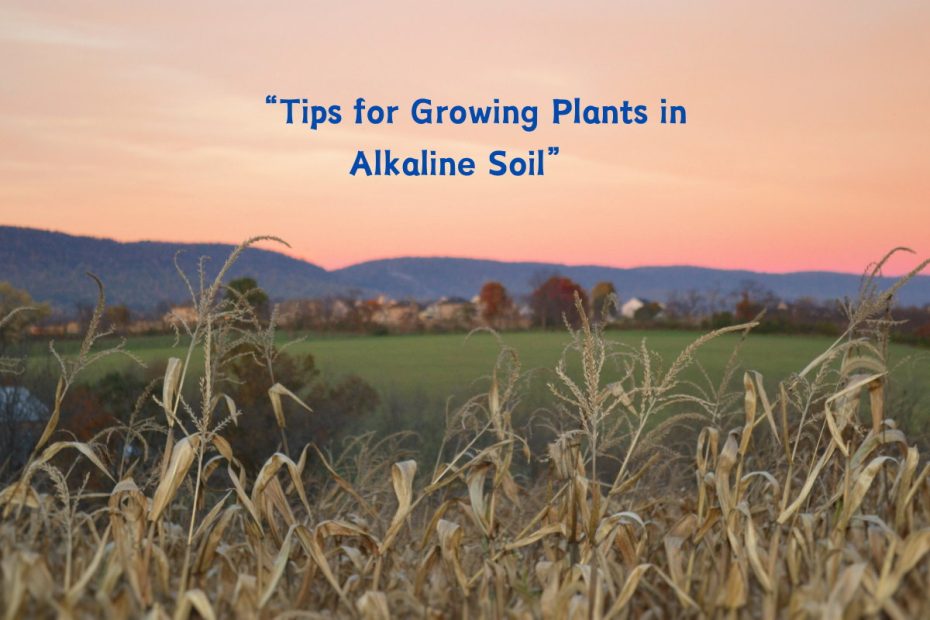Introduction
Alkaline soil, also known as “sweet soil,” can present unique obstacles to plant growth due to its high pH. For example, hydrangeas (which prefer acidic soil, but are very adaptable) have pink flowers. However, with the right knowledge and techniques, you can successfully grow various plants in alkaline soil. Let’s delve into gardening under alkaline conditions and learn how to make the most of this challenging environment.
What is Alkaline Soil?
Alkaline soil has a pH above 7, making it less acidic and more alkaline, and contains calcium carbonate. It is commonly found in arid areas and areas with limestone bedrock. The high pH of alkaline soil can make it difficult for plants to absorb essential nutrients such as iron, manganese, and zinc, resulting in plant nutrient deficiencies and stunted growth.
Choose the Right Plants
Some plants are naturally more tolerant of alkaline soil and can thrive even with a higher pH. Consider incorporating the following plants into your garden:
- Lavandula: Lavender is a popular aromatic plant that thrives in alkaline soil. It is drought tolerant and prefers the well-drained properties of alkaline soil.
- Yarrow (Achillea millefolium): Yarrow is a hardy perennial that grows well in alkaline soil. It has a high tolerance to drought conditions and is often used in dry farming.
- Russian Sage (Perovskia atriplicifolia): Russian sage is a woody perennial known for its silvery leaves and lilac-blue flowers. Drought tolerant and well suited to alkaline soils.
- Sedum (Sedum): Sedums are succulents that can adapt to alkaline environments. Comes in all shapes and sizes. Great for rock gardens or drought-tolerant landscaping.
- Penstemon: Penstemon is a flowering perennial plant that is well suited to alkaline soil. They come in a variety of colors and attract pollinators to the garden.
Known for their ability to adapt to alkaline soil, these plants can add beauty and color to your garden.

Growing Plants in Alkaline Soil Should be Avoided
Plants that prefer acidic soil may have difficulty growing in alkaline soil due to the higher pH. Here are some examples of plants that are generally not well-suited to alkaline soil:
- Azaleas and Rhododendrons: Azaleas and Rhododendrons prefer acidic soil conditions and may have difficulty growing in alkaline soils. High pH can make it difficult for these plants to absorb essential nutrients such as iron, leading to nutrient deficiencies and yellowing of leaves.
- Blueberries and Camellias: Blueberries and camellias are acid-loving plants that require acidic soil to thrive. Alkaline soil blocks the plant’s ability to absorb nutrients such as iron and manganese which are essential for healthy growth and fruit production.
- Hydrangea: Hydrangea color is affected by soil pH, with alkaline soils typically producing pink flowers instead of blue ones. While some hydrangea varieties can tolerate slightly alkaline soil, other varieties may have difficulty growing.
- Gardenia: Gardenia is known for its fragrant white flowers, but is sensitive to alkaline soil. Under alkaline conditions, gardenias will develop yellow leaves due to iron deficiency.
Soil Improvement Methods
use organic matter
To improve the quality of alkaline soil and make it more suitable for plant growth, consider amending the soil with organic matter. Adding organic fertilizers such as compost, peat moss, humic acid, or fulvic acid can adjust soil pH, increase plant nutrient utilization, and improve soil texture and drainage. Regularly adding organic matter to your garden beds can create a more hospitable environment for your plants.
acidifier
Using sulfur or acidic fertilizers can lower the pH of alkaline soil, creating a more favorable environment for acid-loving plants.
cover
Mulching is another important practice for alkaline soil gardening. Mulch helps retain soil moisture, regulates temperature, and suppresses weeds. Organic mulches such as wood chips, straw, or shredded leaves also break down over time, adding valuable nutrients to the soil and improving its overall health.

Conclusion
By understanding the characteristics of alkaline soil, select appropriate plants and implement soil improvement techniques. You can create a thriving garden in alkaline conditions. Embrace the uniqueness of your soil and enjoy the benefits of gardening in a less acidic environment.
FAQs
Can I change the pH of alkaline soil to make it more acidic?
While drastically changing the pH of alkaline soil is challenging, you can use acidifiers and amendments to lower the pH over time.
Are there any vegetables that grow well in alkaline soil?
Certain vegetables, such as spinach, beets, and asparagus, can adapt to alkaline soil conditions and thrive with proper care.
How often should I test the pH of my alkaline soil?
It is recommended to test soil pH at least once a year, preferably in the spring before the growing season begins.
Can I grow acid-loving plants in alkaline soil?
With the right soil amendment and care, you can successfully grow acid-loving plants like blueberries or azaleas in alkaline soil.
Is it better to amend alkaline soil before planting or after experiencing plant growth problems?
Soil amendment before planting is often more effective in creating the right environment for your plants, but adjustments can be made based on plant performance.
